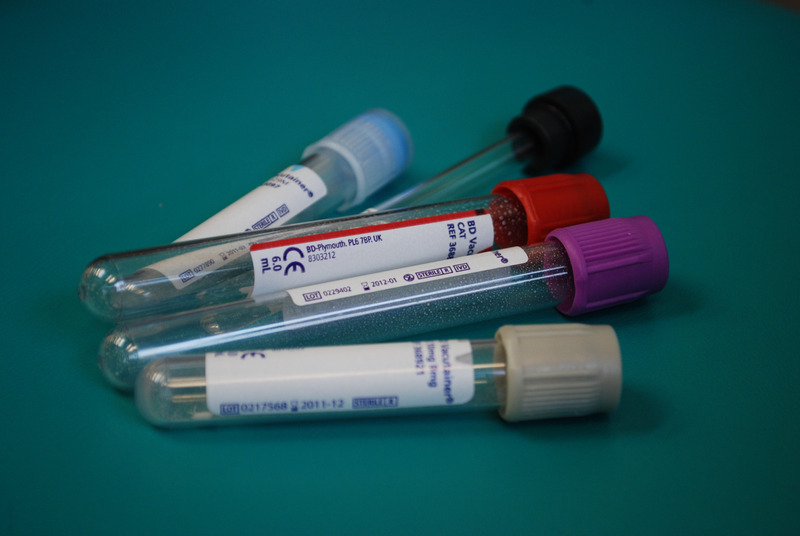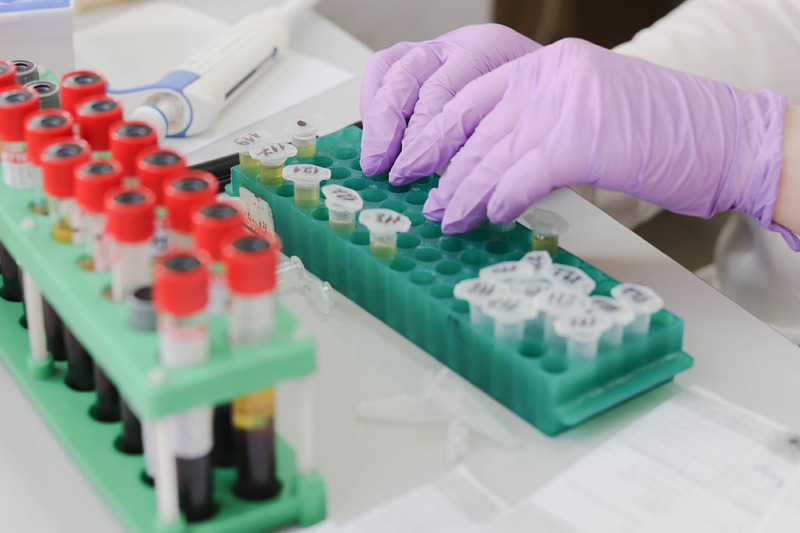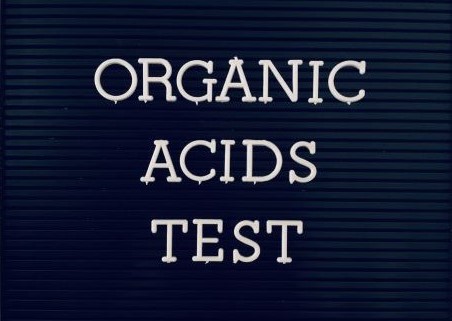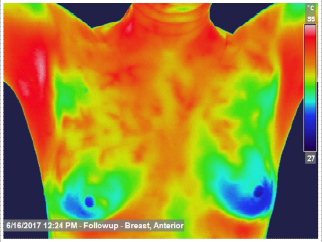TESTING TO OPTIMIZE TREATMENT
Led by John C. Pittman, M.D., a Raleigh integrative doctor with a second location in Wilmington, we strive to address underlying causes and to change the unique biochemical conditions that drive many diseases forward. Everyone has unique needs at the nutritional, biochemical, and psycho-emotional levels. Beyond getting a careful health history and standard lab testing, we use several cutting-edge methods to assess your unique biology and to guide decision-making regarding your health. Although a range of testing options is available, the decision about which tests to perform is made based on each patient’s individual needs. Many of these tests not only help you look for certain problems, but can help you determine whether treatment for a specific problem is working and to encourage specific changes in your nutritional plan and overall lifestyle.

General Blood Count and Metabolic Panels
Basic testing of the blood focuses on the Metabolic Panel and Complete Blood Count (CBC), which together provide a comprehensive metabolic evaluation that includes the fasting glucose (blood sugar), uric acid, blood urea nitrogen (BUN, a measure of liver and kidney function), creatinine, BUN/creatinine ratio (for diagnosis of impaired renal function), electrolytes, liver function, and other aspects of metabolic health.
The CBC component includes the white blood cell (WBC) as well as the proportion of specific types of cells, red blood cell (RBC) count, hemoglobin, hematocrit, and various other aspects of the blood. These tests provide information relevant to and are typically included as a complement to a routine physical examination done by a primary care physician. Though these tests are important for assessing your general health, they only become abnormal when the problems are more pronounced and only rarely will pick up the kinds of complex issues indicated by the other tests such as the ION Panel or NutrEval.

Immunological Testing
Immunological testing helps us evaluate the functioning and overall status of the immune system, which is important in many chronic disease situations. The particular choice of an immunological test (e.g., for a specific set of antibodies or lymphocytes) will depend on your disease situation. For example, in certain chronic infections, we will find low levels of various natural killer cells, lymphocytes, and immunoglobulins. Testing of these cell types provides insights into both general and specific immunity.
While white blood cell counts are a good determinant of general immune function, the measurement of ultra-powerful killer cells can be far more important. For example, chronic Lyme infections are known to suppress certain subsets of the NK cells. Proper interpretation of the lab results can lead to more effective treatment strategies to modulate the immune system or to remove stressors on the immune system. Immunological testing is typically performed prior to the start of therapy, then every several months to document the effectiveness of treatment. One typically hopes to see either a stable test result or an improvement over time.

Hormone Testing
We embrace hormonal tests for many chronic disease situations. The most commonly measured hormones include thyroid hormones, estrogen and progesterone, testosterone, cortisol, and DHEA. Proper interpretation of the lab results can lead to more effective treatment strategies, many of which can lead to major improvements in many aspects of healthy functioning, such as energy, sleep, sexual vitality, joint health, muscle strength, and overall personal well-being.
Only by performing accurate hormone testing is it possible to know your individual status and determine the exact hormones you need. Many patients, concerned about the potential adverse effects of using synthetic hormones, are expressing an interest in “natural” or bio-identical hormones. We offer pharmaceutical-grade bio-identical hormones, dispensed through a compounding pharmacy, as well as an array of nutritional and herbal preparations that support healthy hormonal production and functioning. Hormonal testing also helps enable us to fine-tune our approach to hormone replacement, thus further improving the outcome of therapy.

Food Allergy Testing
Just as hidden infections can be source of chronic illness, so can food allergies and sensitivities that are not immediately detected or recognized. Adverse reactions to food may trigger a vast array of effects in the body, and many of these reactions are mediated by the immune system. Although diagnosis of food allergy has classically involved the detection of IgE antibodies, there has been increasing evidence that more meaningful information can be gained by testing for IgG antibodies to numerous food allergens. IgG testing can help your clinician pinpoint food allergies so that the patient might then avoid these foods and their associated signs and symptoms. The detection of food allergies with the use of IgG testing and other food allergy panels is easy and convenient for both patient and physician. One need only submit a blood sample and the laboratory returns not only the “trigger” foods (those that may trigger allergic reactions) but also a rotation or elimination diet for the patient.

Urinary Organic Acids Test
The Urinary Organic Acids Test (UOAT) measures substances the body eliminates through the urine and is among the best ways to evaluate the levels of intestinal yeast and disease-causing bacteria in the gut. Many individuals with chronic illness, allergies, and neurological disorders have one or more abnormal organic acids in their system, as indicated by the UOAT. Specific organic acids in the urine are byproducts of digestion, human cellular activity, and metabolic activity by organisms in the GI tract.
Some organic acids are abnormal toxic metabolites generated by gut microbes that can cause or worsen many different health issues, such as inflammatory problems, fatigue, mood disorders, and many behavioral disorders. Once any abnormalities are detected by the UOAT, a variety of treatment options are available to treat the condition, including antifungal or antibacterial agents, probiotic supplementation, vitamins, antioxidants and dietary modifications. Results of this “metabolic snapshot” can complement those of other testing methods and reinforce the clinical impression created by a comprehensive health history.

GI Microbial Analysis (GI Map)
In many cases, results of the organic acid testing may warrant further evaluation using the GI Map Microbial Analysis stool test. Stress, antibiotics, poor diet, pollution, parasites and other factors can adversely affect the health of the gastrointestinal system, and, by extension, the body as a whole. The GI Map evaluates your digestive enzymes, absorption, gut flora (good and bad bacteria), parasites, and the colonic environment.
This test is recommended for all chronic GI problems, as well as for acute bowel problems and for many diseases affecting other organ systems. A key aspect of this testing is that it can provide very specific information as to which strategies would be most effective for treating pathogenic flora. In many cases, this test also complements findings obtained from other testing.

Comprehensive Nutrient Testing - NutrEval
- amino acid analysis
- essential and metabolic fatty acids
- organic acids
- oxidative stress and glutathione
- elemental analysis to include heavy metals
NutrEval also has 200 sub-tests that provide highly specific information about your body’s functional need for nutritional cofactors, disease risks, deficiencies, and overall nutritional status. All 200 sub-tests are fed into a computer program, and a wide variety of deficiencies and recommendations are determined from the computerized side of the test printout. Careful interpretation of the five NutrEval tests, together with the computer-generated portion of the results, leads to specific recommendations that can have a dramatic impact on your health and healing potential.

Toxic Non-Metal Chemicals

Mold Mycotoxins
Mycotoxins are toxic metabolites produced by fungal organisms, commonly known as molds.
Mycotoxins are well documented in high quality peer-reviewed scientific journals to have a wide array of toxic effects in humans. Considered the industry standard, RealTime Lab’s Total Mycotoxin Panel detects sixteen of the most toxigenic mycotoxins, including 9 macrocyclic trichothecenes that have been proven to be caused by Stachybotrys, otherwise known as “Black Mold.”
Testing is done using competitive ELISA, a highly sensitive detection method that uses antibodies prepared against mycotoxins.

Heavy Metal Testing
Blood and urine collection is effective for identifying acute, extreme, or ongoing metal exposure (that is, those exposures that will raise the level of metals in your bloodstream). Although we can show some level of exposure based on red blood cell analysis, the optimal method for evaluating general body burden is the chelation challenge test in which specific metal-binding chelating agents are given, pulling metals out of the bones and other deep tissues which are then analyzed in the urine. Chelation challenge testing will often indicate potential concerns that might be missed by blood and urine testing.
After being stabilized through intravenous nutrient infusion, one is given an infusion of a chelating drug to bind metals and pull them from the tissues. These metals are then eliminated through the kidneys and released into the urine. The evaluation of a timed collection of urine will show the quantity of metals released and provide an idea of the severity of the intoxication. As treatment progresses, follow-up tests will show a reduction in the amount of heavy metals being released, indicating that your body is recovering.

Tick Borne Infections
While ultimately the diagnosis Lyme Disease and other infections transmitted by ticks and other vectors are based on clinical presentation and history, the Carolina Center has incorporated a number of innovative tests for the detection of these infections. These range from more extensive Western Blot tests through Igenex Laboratories to multiple infection panels offered by a variety of labs include a culture for Borrelia burgdorferi and various Bartonella species. Now considered the most accurate, we offer DNA PCR testing for the most common forms of Borrelia as well as other tic-borne organisms such as Babesia, Bartonella and Ehrlichia.

Infrared Thermal Imaging
Infrared thermal imagining, also known as thermography, is a safe and promising tool for detecting changes in temperature on various parts of the body that provides insight into physiological function. Thermal imaging of the breast is a complementary screening tool that looks at the conditions that could fuel the growth and spread of breast cancer. In this way, it can help you pick up a potentially cancerous process long before a breast tumor actually develops and becomes a threat. The ultra-sensitive medical infrared camera provides a color-coded “fingerprint” of the breast that can indicate whether specific measures are needed to improve breast health. Research suggests that breast thermography can detect first signs of breast cancer 6 to 8 years before mammography, and that an abnormal thermagram is ten times as important as having a family history of breast cancer. In recent years, breast thermography has evolved dramatically in terms of technological sophistication and thanks to newly developed guidelines approved by the American Academy of Thermology (AAT). The new guidelines provide international standards for understanding the indications for using thermography, the type of equipment, specifications and criteria for optimal administration, consistency and reliability of results, and the training required for thermologists. By adhering to AAT guidelines, our patients are getting the greatest possible benefit from thermal imaging. Thermascan may be the best screening option for women under 50, women with dense breasts, and older women who want more assurance that mammography is not missing a potential disease situation.
Based on the new guidelines, women with normal thermograms should ideally be screened on a regular, annual basis. Women with abnormal thermograms should undergo screening more frequently, depending on the degree of abnormality. Recommendations for repeat thermographic imaging are based solely on the findings of the study and are not based on the number of mammograms previously performed.
